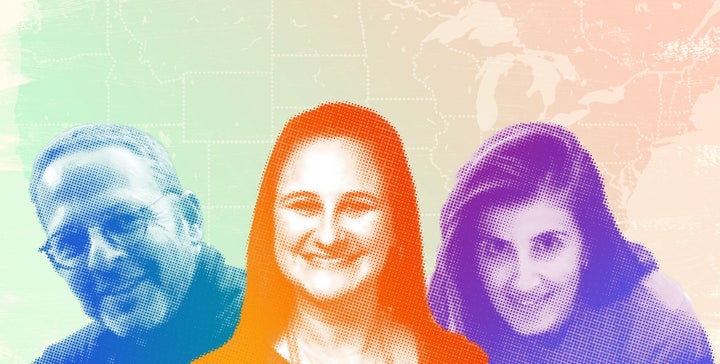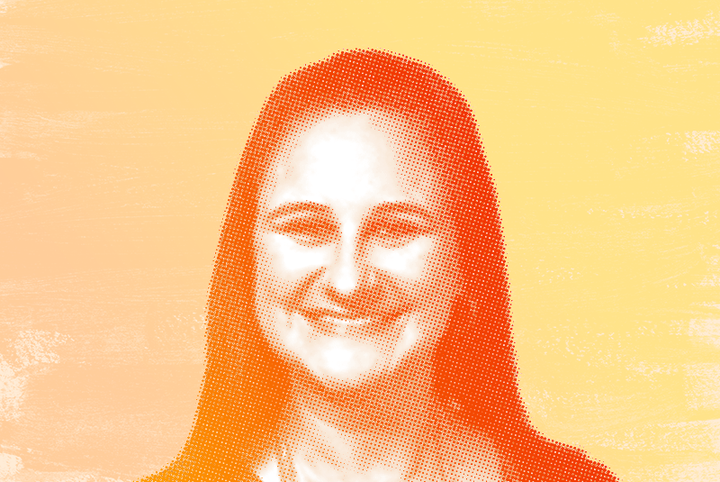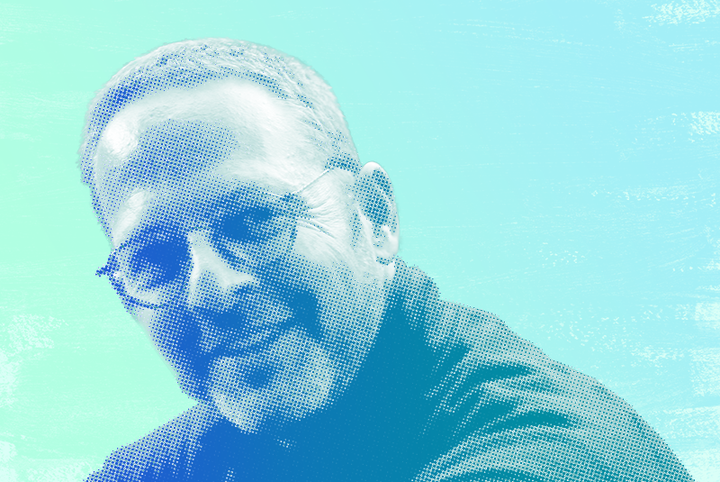
Most of us try our hands at saving the planet when we can. We’re getting on board with the anti-straw movement, we opt out of getting cutlery with our food delivery orders when possible and we try to remember to bring canvas bags with us to the grocery store. But some people take reduce, reuse, recycle to a whole new level, taking what’s right in front of them and repurposing it to address the often dire needs of people in their communities.
One hundred individuals are being honored as part of the TIAA Difference Maker 100 program for the amazing work they do, many of them for their vital roles in preserving our planet. We have teamed up with TIAA to highlight three of those individuals: Elizabeth Swiman of Sustainable Campus, Sheila Morovati of Crayon Collection and Rick Nahmias of Food Forward, along with some of their colleagues without whose help their work wouldn’t be possible.
Whether it’s collecting leftover crayons from restaurants to give to classrooms, or rescuing perfectly good fruits and vegetables before they go bad to feed those who need it most, these difference makers are thinking globally and acting in their very own backyards — sometimes literally — and their actions are going a long way. Read on to learn their stories.
Elizabeth Swiman
Florida State University’s Sustainable Campus, Tallahassee, FL

Naira Diptee, a junior at Florida State University, first got involved with the school’s Sustainable Campus program through its reCycle Bike initiative. “Before I ever worked here, I rented a bike through reCycle Bike,” said Diptee, a graphic designer at Sustainable Campus, the environmental and sustainability group on campus. “I really like that program because I feel like it’s such an easy way for students to get involved in our day-to-day life, [because] we have to get places, like going to class or going to the supermarket, or just hanging out.”
ReCycle Bike, which allows students to rent bikes that were left behind and refurbished, a semester at a time, is just one of many programs Sustainable Campus runs. The organization directly affects hundreds of students every semester through its many programs. There’s the Seminole Organic Garden, where students can come and learn how to grow and cook their own food for almost no cost. There’s also its game-day recycling program, Garnet and Gold Goes Green, or G4 for short. And there’s Take Back the Tap, its water advocacy campaign, which promotes tap water over bottled. “In our programming, we get to help students engage with sustainability behavior that hopefully gets incorporated into their everyday lives,” Elizabeth Swiman, the organization’s director, said.
Sustainable Campus has had a significant impact at FSU. In the 2016 to 2017 school year alone, 106 students rented bikes through reCycle Bike, 512 people pledged to not buy bottled water and more than 15 tons of stuff otherwise headed for the dump was collected and donated to the community through Chuck it for Charity, the organization’s student move-out program. As of 2017, G4 volunteers had recycled over 200 tons of plastic, aluminum and glass over the prior 12 football seasons.
When Swiman joined FSU in 2007, she took a leadership role in the group that would officially become Sustainable Campus in 2010. “Together,” she said referring to the faculty and staff who formed Sustainable Campus, “we were persistent in our outreach efforts and taking every opportunity we could find to highlight the importance of sustainability, and the importance of FSU taking a lead in addressing our role in the community impact,” said Swiman. Since then, the group has expanded to include a small staff, graduate assistants, student coordinators and interns.
The university’s strategic plan and list of priorities included sustainability for the first time this year, a large feat. “I think working the strategic plan is exactly where we need to be right now,” said Swiman, “because that sets us up for another 10 years. These are the guiding priorities of the institution for the foreseeable future, and as long as we get to be a part of that conversation, I feel pretty good.” Diptee added her hope for the future, too. “I definitely see sustainability being more at the forefront of people’s minds in everyday things,” she said. “Whether it’s our classrooms or offices here at FSU, or just the different departments, really thinking more about sustainability.”
Sheila Morovati
Crayon Collection, Santa Monica, CA

For Sheila Morovati, the motivation for starting her nonprofit, Crayon Collection, in 2009, was personal. Once she became a mom and began dining out at restaurants with her daughter, she noticed the crayons given to her by the waitstaff would be thrown away after just one use. As she began to look further into the matter, she learned that restaurants throw away 150 million crayons per year, and crayons, made of paraffin wax, don’t decompose. In other words, crayons that aren’t repurposed sit in landfills forever.
At the same time, she learned there are classrooms in the U.S. that lack basic school supplies. Morovati, who has a sociology background, said, “I really felt like when I saw this problem and I saw that nobody else had really thought of this before, I was like, ‘This is an issue that we need to address because this is a time where we can shine light on societal behavior and societal waste.’”
In a way, Crayon Collection, which consists of three people and lots of volunteers, is like a matchmaking service. It pairs restaurants willing to save and collect their leftover crayons with nearby schools in need that will receive them. The L.A.-based organization works with hundreds of restaurants all over the U.S., and its crayons are in over 1,000 schools. And people all over the world replicate Crayon Collection’s mission themselves, too, using its site to find which schools to donate to after collecting their own crayons.
Another way Crayon Collection is exercising its DIY spirit is by making its arts education curriculum widely accessible. The lessons can be downloaded for free from the organization’s site, and are intended to be used with the collected crayons. Morovati’s goal is to hit up every single school district, starting from the bottom 10 percent up. “It’s just literally rethinking trash,” she said. “We have to rethink how much we consume and discard, and know what else…we can do. How far can we go with this?”
Even further than crayons, it turns out. Morovati’s latest mission?: Straws. While doing research one day on all the ways in which our daily habits negatively affect the environment, she came across the statistic that 500 million straws per day are thrown away in the U.S. alone. Morovati was shocked. She reached out to the city of Malibu and suggested they ban straws there, and to her surprise, it worked. After a bit of cajoling, they ended up banning straws, single use cutlery, plastic cutlery and stirrers.
As for the future, Morovati has self-proclaimed lofty goals. “I really hope that this lesson of being more mindful of how much we waste and how much we discard will change the trajectory of the status of the environment through this very simple process,” she said, “[that] these children will…know that there are different ways you can think outside the box and help the planet by just reshifting, redirecting what you would consider trash.”
Rick Nahmias
Food Forward, North Hollywood, CA

Rick Nahmias was inspired to start his nonprofit, Food Forward, after noticing excess fruit in a friend’s backyard one day while on a walk. Food Forward, founded in 2009, rescues and redistributes surplus produce to hunger relief agencies across Southern California. “I didn’t think of it as a nonprofit to start. I thought of it as one action, that I had one friend in the neighborhood with laden citrus trees,” Nahmias said. “In all honesty, I had no agenda, even for the first few months, for this thing to turn into the beast that it became.”
After gathering volunteers, Nahmias and his crew collected about 85 pounds of tangerines that first week, and donated it to a local food pantry. The next week, they collected around 300, the following week, 400 or 500. “Then you get the idea, ‘Well, what else is out there? How many more trees are not being harvested?’” he said. By the end of the first year, they had harvested just over 100,000 pounds of fruit from a few hundred backyards and a few large orchards, and there was a great community being built.
What the operation has become since then is astounding. Food Forward now has offices in L.A. and Ventura County, and a small crew that works the wholesale district, recovering produce, which is where the bulk of its produce comes from now. The organization currently collects at 24 farmers markets across L.A. and Ventura County every week, and has a backyard harvesting program, as well. Each month, Food Forward recovers about 2 million pounds of produce, which feeds over a million people in eight counties.
Jason Reedy, the manager of the Farmers Market Recovery Program, explained how all that produce goes from almost ending up in a landfill to the plates of those in need. Once a team collects the excess produce from a farmers market or a backyard harvest, they hand it off to one of 200 service agencies they work with to then distribute to even more agencies. “The work we do is able to expand and help so many different agencies,” Reedy said, among them Food Not Bombs and Ronald McDonald House.
If this produce wasn’t being picked up and redistributed to people who need it, it’s safe to say most of it would end up in a landfill, and not just be wasted, but actually be detrimental to the environment. Once produce gets to a landfill, it emits methane and other noxious fumes, putting a carbon footprint in the air. “That’s the flip side of the coin. We’re not only feeding people, but we’re also saving the environment,” Nahmias said. Food Forward projects to recover a little over 25 million pounds of produce in 2018, which would prevent about 9,512 metric tons of carbon dioxide equivalent from being released into the environment this year. This would be akin to taking about 2,012 passenger vehicles off the road for a whole year.
Nahmias feels like food waste is having its moment, and he hopes it lasts. “What we’re helping to do is offset carbon, offset hunger and also educate the public,” he said. “My goal would be for food waste to become as much of an issue and a thing people can activate themselves around as recycling has been.”
It’s clear there’s still work to be done, but these difference makers remind us that sometimes change starts in your backyard, at a restaurant, on a walk, in the midst of your everyday. Taking items people perceive as waste and finding new purposes for them — even if it’s just a little bit at a time — can and does have a huge impact.
To celebrate its centennial, TIAA is honoring 100 people working to make positive and lasting change in the lives of others with awards of $10,000 each to use toward their nonprofit organizations. Elizabeth Swiman, Sheila Morovati and Rick Nahmias are among those being honored. The money being awarded to these honorees and their organizations will go toward improving and expanding their respective programs. We have partnered with TIAA to put the spotlight on their stories, and other stories like these. To learn more about the program, and the amazing work the rest of the honorees are doing, visit: www.TIAAdifferencemaker100.org.
Words by Jesse Sposato